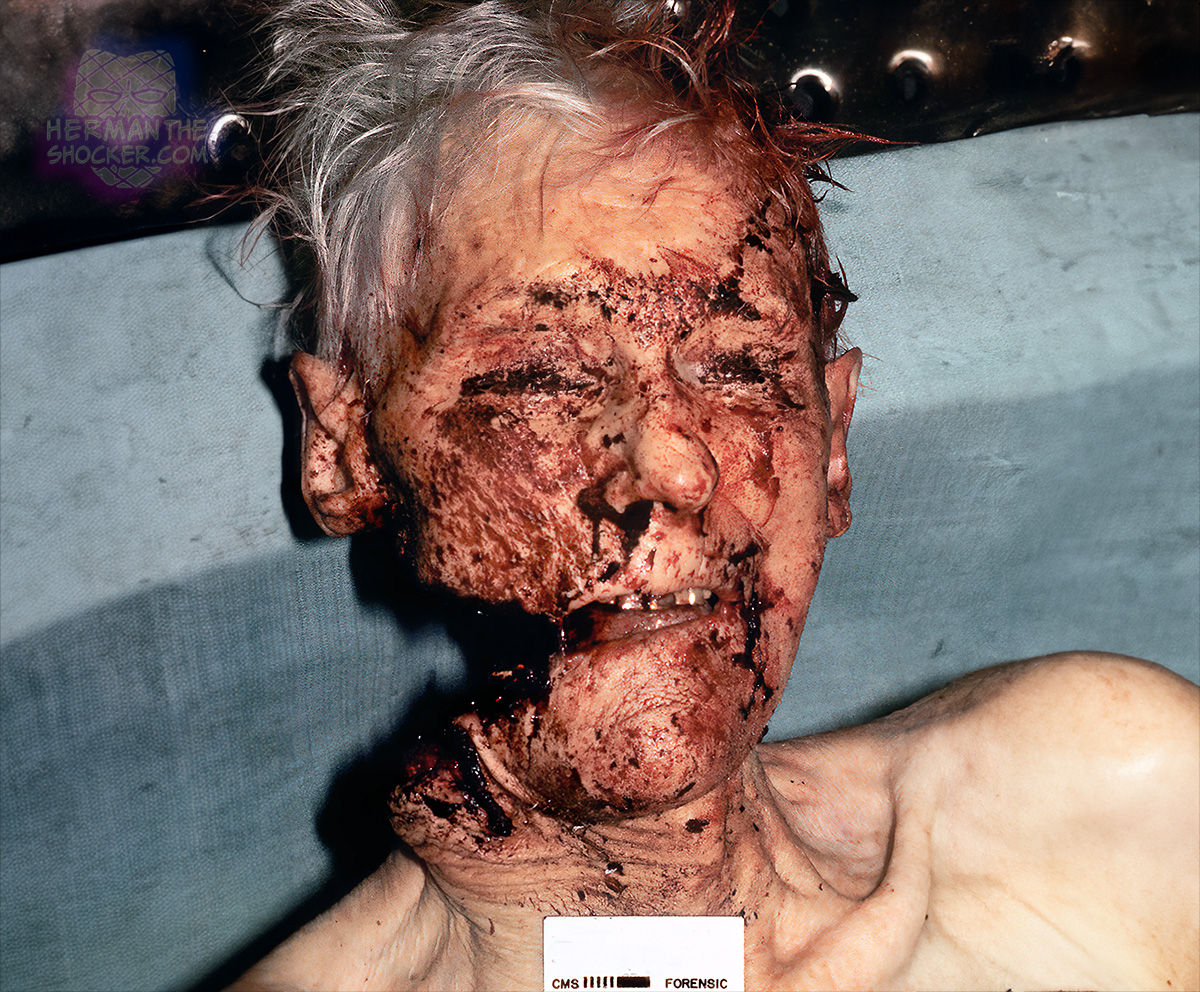This individual committed suicide with a chainsaw into the right side of the face. No further info. Suicides, or suicidal attempts committed with power saws, are rare events. It is an uncommonly reported incident and the forensic literature comprises few case reports of chainsaw suicides. Obviously, using a chainsaw for suicide is an exception and is considered a violent method, more frequently used by men. These injuries almost exclusively involve the neck or the head region, leading to lethal central dysregulation and exsanguination.
Reconstruction of the sequence of violent events by comparing wound morphology and the tool possibly utilized to inflict an injury, including consideration of biomechanical and technical aspects, is one of the classical tasks of the medico-legal expert. He also needs to know the criminalistic findings to determine whether the incident in question occurred through the action of another person or by accident.
Generally, chainsaw wounds are characterized by one main cut, with multiple smaller adjacent parallel cuts. These side-by-side parallel cuts vary in depth, resulting in tissue loss, surface abrasions, and incisions in the affected tissue. The chainsaw cuts a groove 0.6–1 cm wide by means of gouged-shaped teeth on each side of the chain. The cuts usually are straight but produce some tags of tissue in the wound. The depth of the wound varies greatly depending on the duration and the force of the saw to the head and neck area. The width of the cuts varies with the lateral motion of the saw.
Autopsies can provide documentation of external or internal injuries, diseases and the presence of alcohols, drugs and other substances in body fluids and tissues. Forensic autopsies may shed light on the circumstances of death in ambiguous and potentially criminal cases, providing essential information to police authorities and courts of law. Absence of autopsy data may increase the possibility of incorrect conclusions as to the cause and manner of death and, in the worst instance, failure to detect homicide. The role of forensic autopsy in cases of “obviously chainsaw suicides” is essential and has to determine whether injuries found on the dead body could be self-inflicted.
Latest posts








